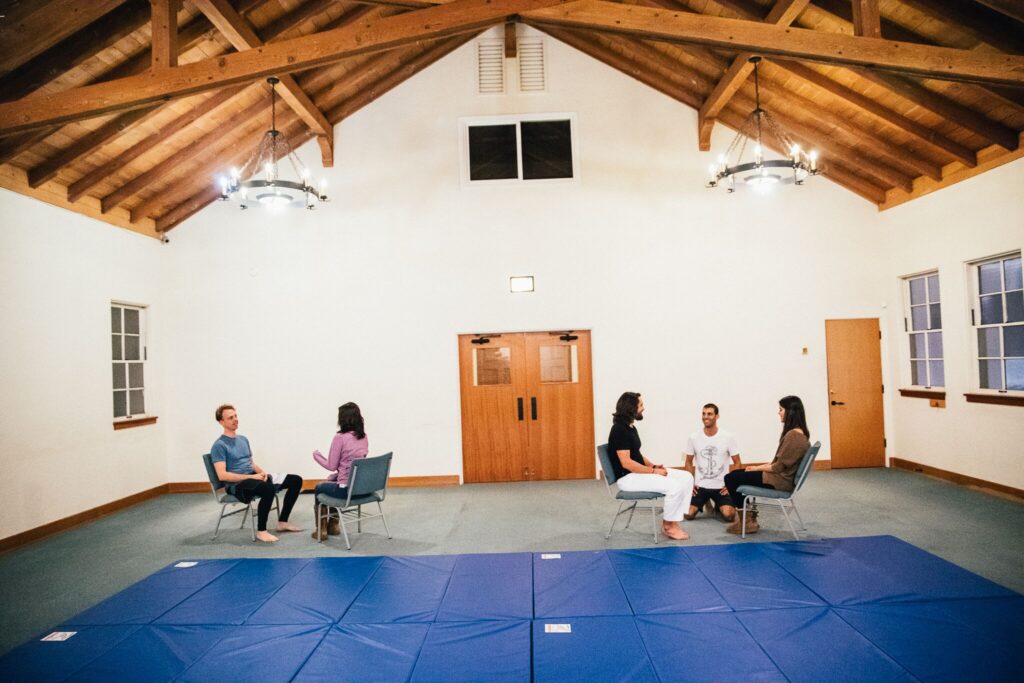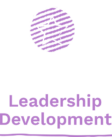Studies show that 7 of 10 workers would trade their current jobs for a position that offered them more fulfillment and meaning—a third would even take a pay cut for that offer. Businesses have been taking notice of these findings from the science of motivation. According to a study by PwC, 79% of leaders know that employee fulfillment is paramount to business success. However, only 38% of these leaders are actually making business decisions according to this metric.
In other words, businesses know that to attract the best talent and maximize the potential of their employees, they have to create cultures of fulfillment in the workplace. But they are struggling with implementation.
Nathanael Chawkin, after over six years as an executive coach for an intensive, 52-week integral leadership program, came to see this gap as the difference between what leaders were willing to put into practice themselves and the change they were capable of implementing within their own companies. That’s why he founded Palaestra Leadership in 2016, where he has been on the frontlines of creating cultural change within organizations.
Some experts believe that creating a “culture of fulfillment” entails offering amenities oriented towards ease, comfort, and convenience—as in the form of on-site gym facilities, more flexible work hours and vacations, and more readily-available snacks. But psychologists such as Dan Pink have emphasized that creating a path towards fulfillment in an organization means offering paths towards growth and connectedness—in other words, answering to the factors of intrinsic motivation, instead of just extrinsic motivators.
By providing the right tools and insights for radical culture shifts, Chawkin enables organizations to create a sense of connectedness and cultivate growth mindsets for individuals at work. In particular, Chawkin helps leaders create environments that support positive peer coaching—a method that makes employees 65% more likely to be fulfilled. Through peer coaching, coworkers are empowered to support each other, teach one another new skills, work through business issues productively, and foster one another’s personal growth. Furthermore, when employees coach one another, leadership skills come to be fostered throughout the entire organization.
Also in Chawkin’s toolkit, he offers a way to integrate meaningful weekly feedback—either within the structure of peer coaching or within other types of situations. Receiving meaningful feedback has been shown to increase employee engagement by 350%. According to a study done by Gallup, only 15% of employees on average report being engaged in their work—and disengaged employees have been shown to cost companies an eye-popping $450-550 billion per year.
However, for Chawkin, the route to creating an environment that can sustain peer coaching and meaningful feedback and tap into their true potential is paved with pitfalls and challenges. We sat down with Chawkin to get his take on what to expect—and how to foster success—when leading a cultural shift in an organization to support peer coaching and to create a work culture of fulfillment, rather than one of financial incentives.
Leaders go first.
In 2009, while working for the Stagen Leadership Academy, Chawkin saw the executives he coached returned to work after a yearlong program in integral leadership, but they didn’t have a formal way to build the practices they’d learned into regular rhythms with their teams. “There was no community of practice in the places they went to work every day,” Chawkin notes.
As a result, he founded Palaestra Leadership with the aim of helping such leaders build communities of practice directly into their work culture. One of his first clients was Bryan Hansel of Chanje, who was worried that his leadership was igniting more conflicts rather than resolving them. “There were little fires everywhere. People were talking about each other behind their backs, and he had to wade through that on a daily basis.”
Hansel went to Chawkin to figure out what was going on. Hansel had learned that where high performance teamwork was the goal, communication of feedback was paramount. However, as he talked through the issue with Chawkin, they both came to realize the process of giving feedback was becoming a place where tensions escalated. “I came to realize that unless everyone also knew how to receive feedback, people got defensive and things escalated,” Chawkin recalls.
The lessons of leadership, in other words, could not simply operate by a trickle-down approach with a single executive using the toolkit; the capacity for growth and avenues for communication could be opened and productive only if these lessons came to be available to all—if certain methods came to be part of the operating system of everyone in the organization. But where to start?
Chawkin coached Hansel to go first. As the leader of the organization and its culture, Hansel was the first one in the fishbowl to model how to receive feedback and have others point out his blindspots as a leader.
The key, as Chawkin explains it, is “looking in the mirror” as a leader. Rather than taking on a victim mindset—where a leader sees things happening to him—a leader needs to take responsibility for his contribution to a problem.
As Chawkin explains it, “There is something about leadership that is synonymous with self-reflection. You can’t very well say ‘who hired all these idiots!?’ because it just comes back to you again as the leader. You’re responsible. When a leader realizes this is going on all the time, then they can easily shift their perspective from things happening to them to things happening for them. It’s tough medicine at first, but that’s where they start leading to learn instead of just learning to lead.”
As a leader learns to demonstrate his commitment to vulnerability and personal growth by example—as in the case of Bryan Hansel, who showed how he could be coached to receive feedback—he also steps into learning to be a coach himself. As Chawkin tells it, “Hansel realized that he was the biggest bottleneck; he was contributing to the waste, because he didn’t know how to coach and develop people to address their own tensions head on.”
Surface conflict in a structured way, but take the risk to do so authentically and openly.
To build cultures of trust and a sense of connectedness at work, Chawkin brings toolkits forged by the latest research in developmental psychology, and he trains his clients to work through tension using his toolkits. “Trust doesn’t come from just being comfortable,” he warns. “My whole business is based on the mojo of being ‘on the mat’—building teams who know how to challenge each other through handling conflict and using that to create a whole new level of trust.”
Chawkin brings to his coaching sessions over ten years of experience as a martial arts instructor, and he uses his experience training students in “on the mat” combat to inform how he coaches in organizations. At times, being “on the mat” is a metaphor that helps model the ideals of a community of practice. At other times, he literally involves team members in martial arts practices to demonstrate how their instincts for dealing with physical conflict carry over into their professional lives.
For Hansel’s team, Chawkin showed them how to “follow the form to prevent injury.” Through using the tools of structured dialogue, the team was able to create a level of safety and trust that empowered them to real, authentic freedom of speech.
“Everyone has heard about Stephen Covey’s emotional bank account—how you need to make three positive comments for every one negative comment in order to stay in the black. But what we experienced was different,” Chawkin explains.
“When you feel psychologically safe enough to take the risk of telling someone the truth about how you see them, of extending yourself for the sake of their personal growth, it is actually the constructive feedback that can make them feel like you really care about them.”
Chawkin emphasizes though that the dialogue still must retain structure for this to be beneficial, and that this can be challenging enough to require mediation. “Of course, as we joke in martial arts, ‘There is no revenge, but there is my turn.‘ You need to make sure the perspective taking process is democratized so it flows both ways. That tends to assure people speak in a way they’d like to be spoken to. If not, a coach is there to mediate as the referee.”
Go where the real tensions are, and learn by doing.
Chawkin emphasizes that his tools are to be applied to the actual tensions and stressors affecting business in the workplace. As he notes, people can commit to doing things differently only when they’re bringing their real problems and conflicts from their team environments to a coaching session. “When you take an academic training and put it in the business, then the tensions that are real and present in the business become a kind of action-learning curriculum,” Chawkin points out.
As this pertains to creating an environment for peer coaching, bringing real issues into the coaching setting has the advantage that the people learning are likely to have interpersonal dynamics that are already in play. That means they can learn to coach one another in an authentic setting, as they trade off between seeing the use of certain tools modeled and putting them to work with their fellow team members.

In group coaching sessions, team members might first review the basics of a particular mental model. For example, in the drama triangle, participants are told how they can shift their mindsets from victim to creator by transforming complaints into commitments. They then watch this modeled by an expert coach or more practiced leader in a fishbowl. Next, they move into peer coaching breakouts to practice and get feedback themselves. As Chawkin explains, “When employees directly engage in coaching each other, they can learn by doing. You don’t get better by watching me do push-ups. You have to do them yourself to improve.”
Prepare for radical change and hard choices.
As Hansel had discovered, tools intended to foster true, authentic dialogue must be employed in organizational cultures that know how to handle conflict. Chawkin emphasizes that meant getting everyone on board; Hansel had to exercise discipline and make the right call when some employees refused to participate and invest alongside everyone else in co-creating a culture of personal growth.
Chawkin recalls the upheaval at Hansel’s organization, “There was definitely breakdown before there was breakthrough.”
“Even if you install a new strategic planning process, 80% of the time there’s a staffing change,” Chawkin explains. “When you’re trying to create a culture, everyone must be committed to being conscious in certain ways and to living by certain values. That means there’s a lot of churn, and you should prepare to be disrupted.”
Democratize access to coaching within an organization.
The executive team is central to envisioning and initiating the change that everyone would want to see in their teams and in themselves. But creating a culture of fulfillment is about enabling personal growth for everyone, and that type of journey requires democratizing access to leadership training and coaching. In other words, cultures of fulfillment can be cultivated and maintained when professional coaching services are made available to all members of an organization in an ongoing fashion, so that they can embark on their own journeys of personal growth within the context of their work.
Chawkin advises two phases for democratizing leadership and turning on peer coaching.
- Build an in-house coaching practice, allowing everyone to have easy access to professional coaching services. For small and mid-sized companies, he advises splitting the human resources team so that one part of it is dedicated to human development.
- Turn on peer coaching in the organization once everyone has experienced being coached in the toolkit and is ready to step into developing their own coaching competency. .
“90% of people are willing to coach and be coached,” Chawkin says, citing a study by Imperative. “And that’s how they get a sense of fulfillment.”
The next step for scaling leadership
For Chawkin, democratizing access to coaching not only is the first step to creating cultures of fulfillment for individuals and enabling cost savings through peer coaching, but it also promises huge payoffs for each team’s “collective intelligence,” as he calls it. Leaders might “go first,” but he offers a vision of leadership that extends beyond single leaders implementing their will upon an organization—one in which mutual self-awareness between individuals contributes to a more functional and higher-achieving whole. “They say the next Buddha will be a Sangha,” he explains. “That to me means that the next great leader is a high-performing team, since the Sangha is the collective.”
As he references this transcendental possibility, Chawkin immediately grounds it in a convincing, concrete example. “There were some huge egos on the great Chicago Bulls team from the 90s: Jordan, Pippin, Rodman,” he says. “They called in a mindfulness coach, Phil Jackson, who taught them how to set their egos aside. If you are willing to pass the ball to the guy with the highest percentage shot, rather than trying to achieve something for your own ego, it’s more likely the team will win. You can’t outrun a basketball. It’s how the San Antonio Spurs beat LeBron James. They were a team, but he was just an individual.”
Based on an interview between Nathanael Chawkin and Eaming Wu. Written by Eaming Wu.








